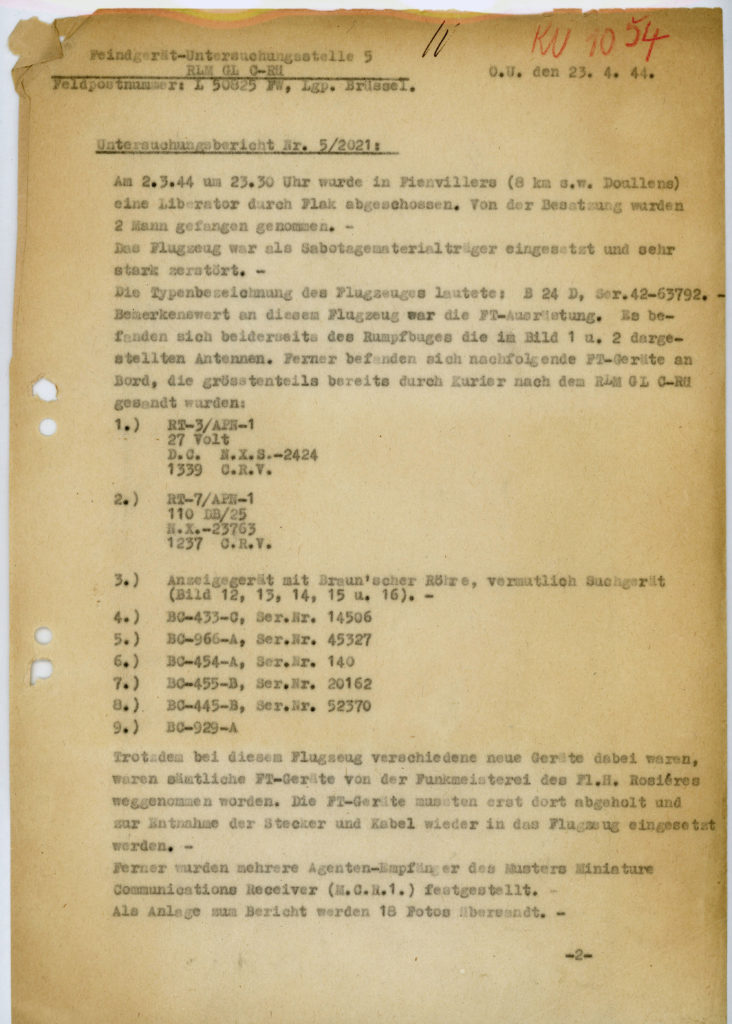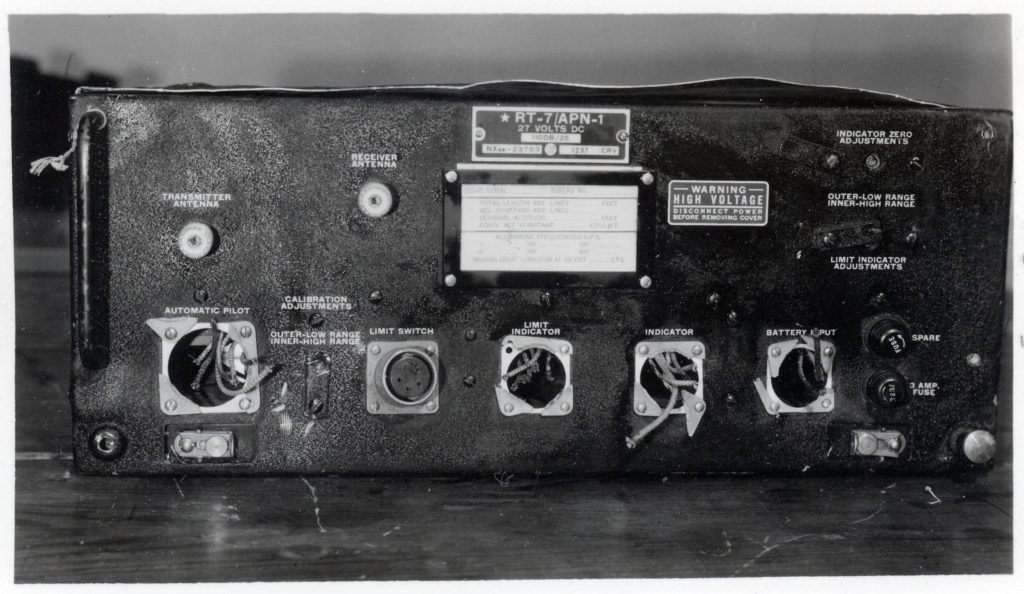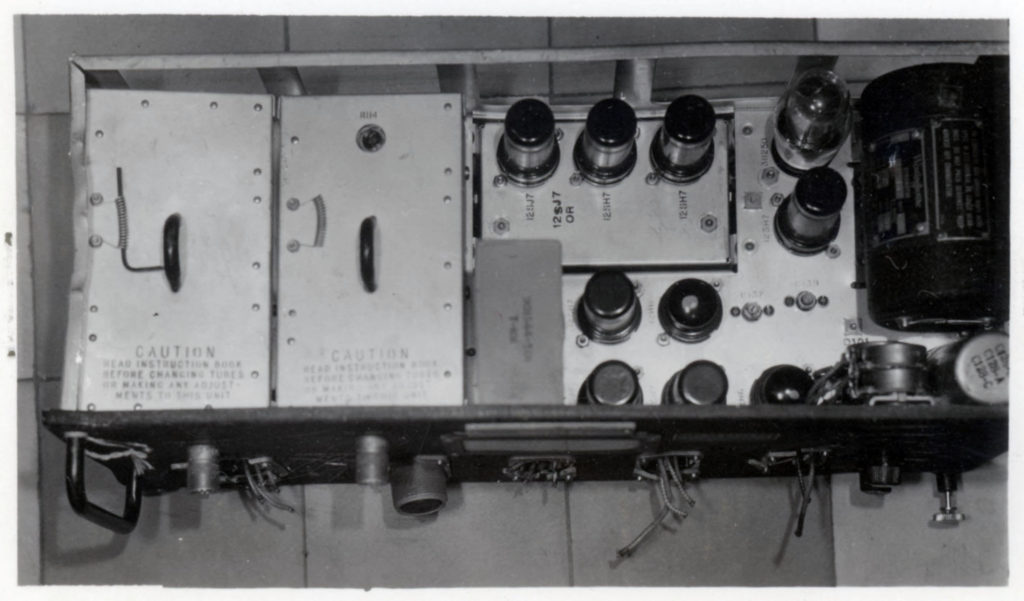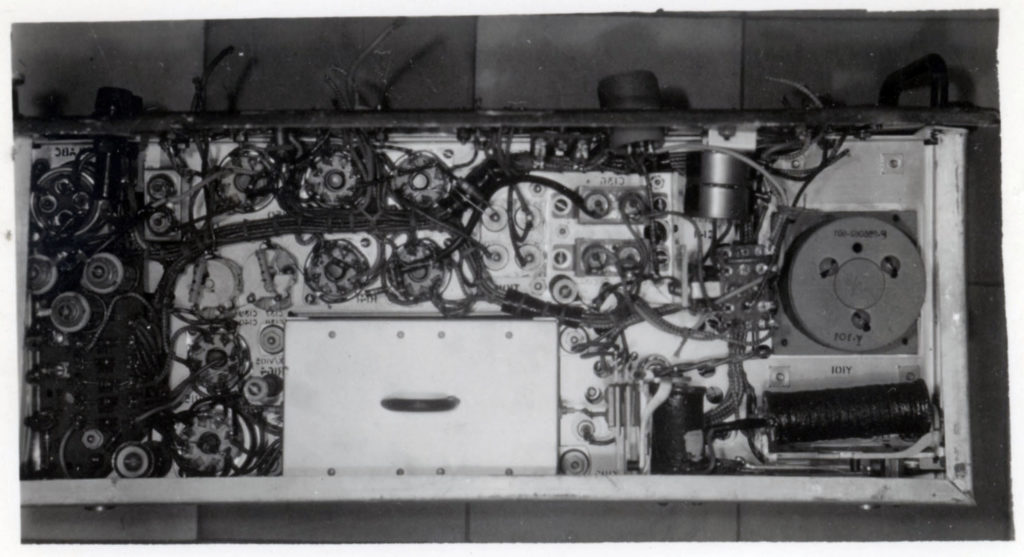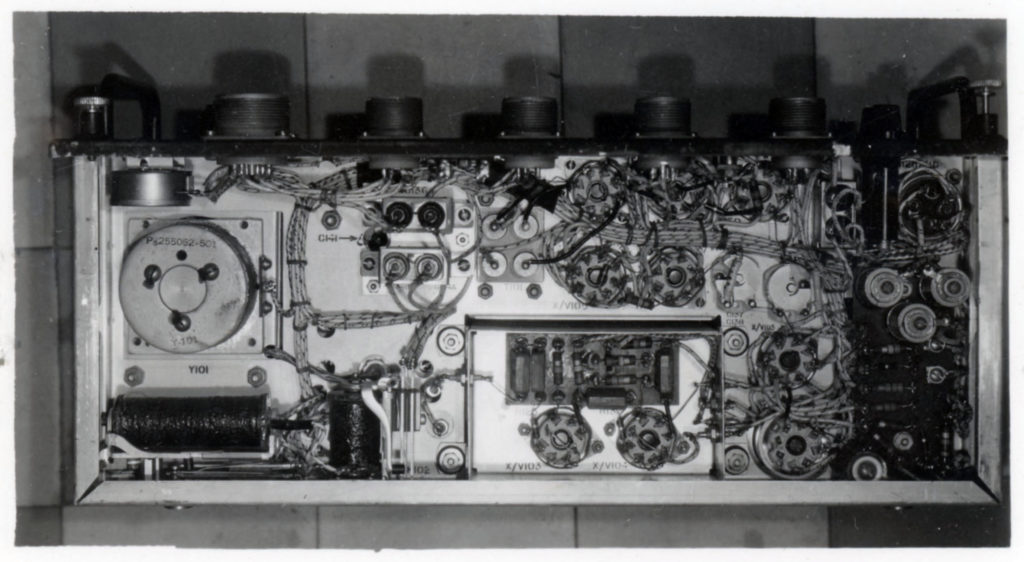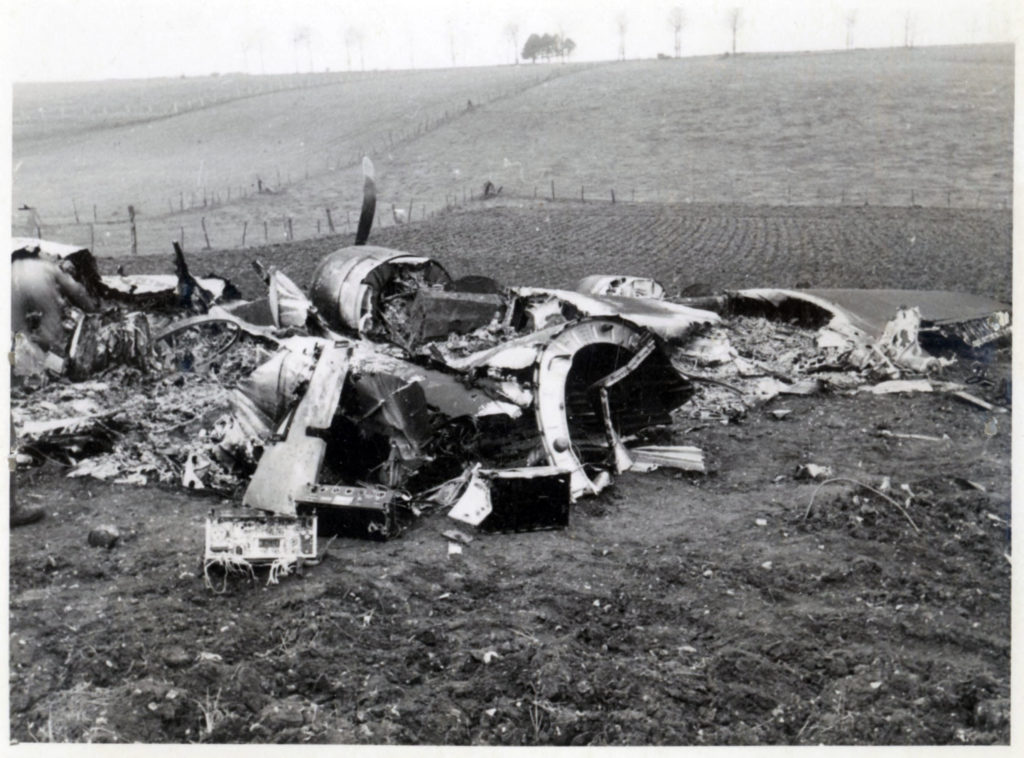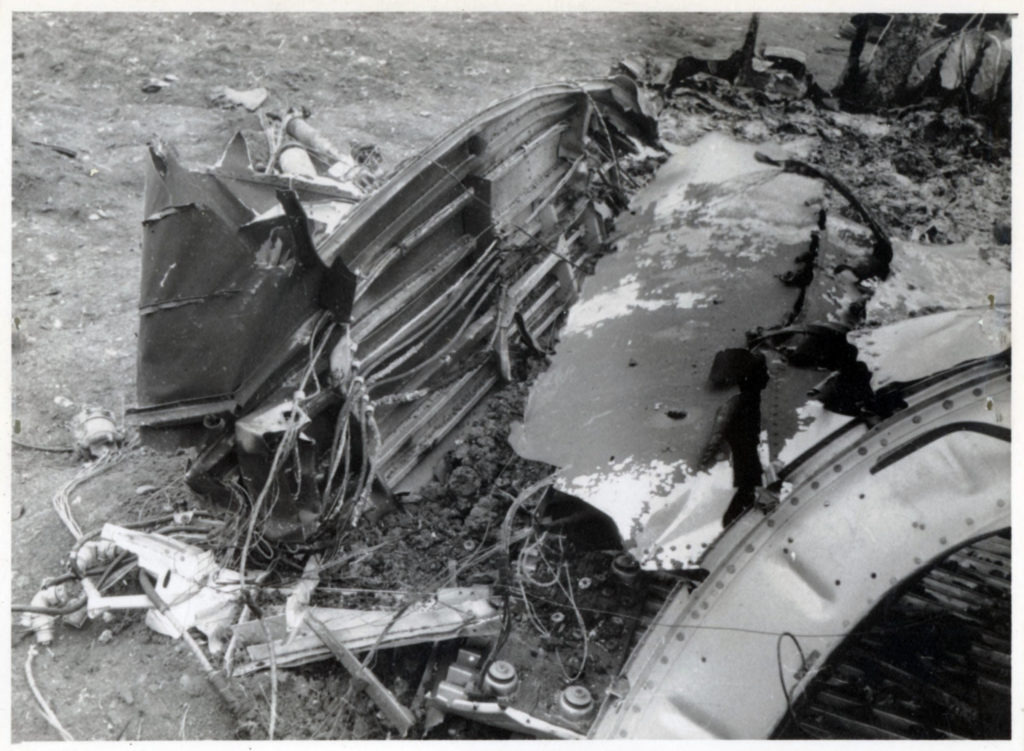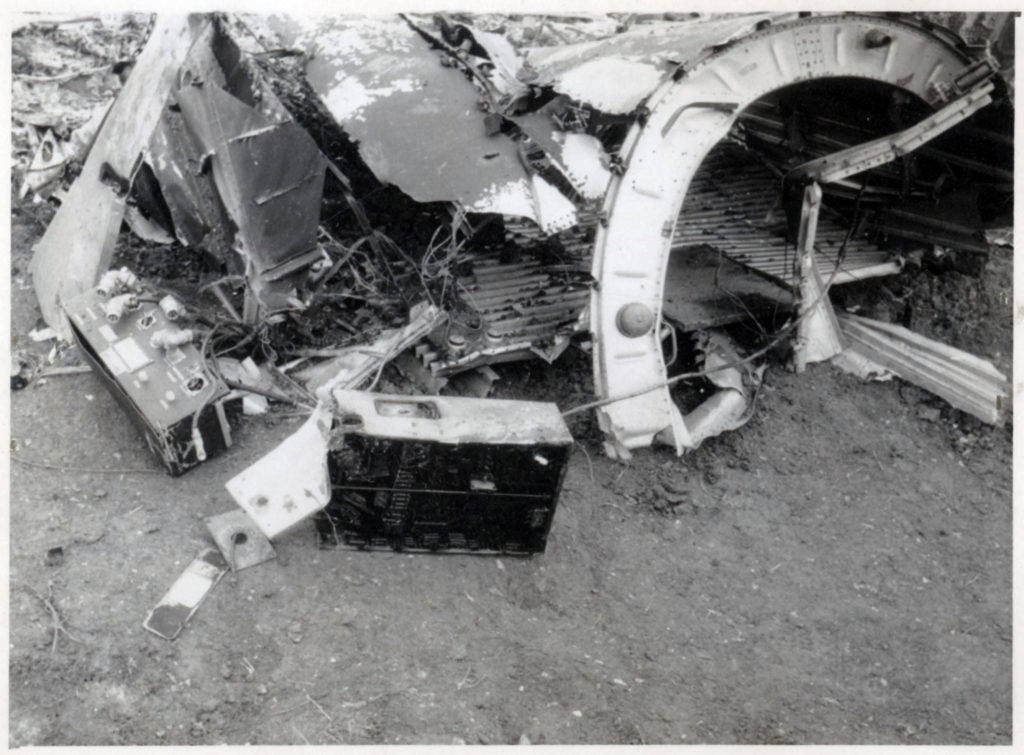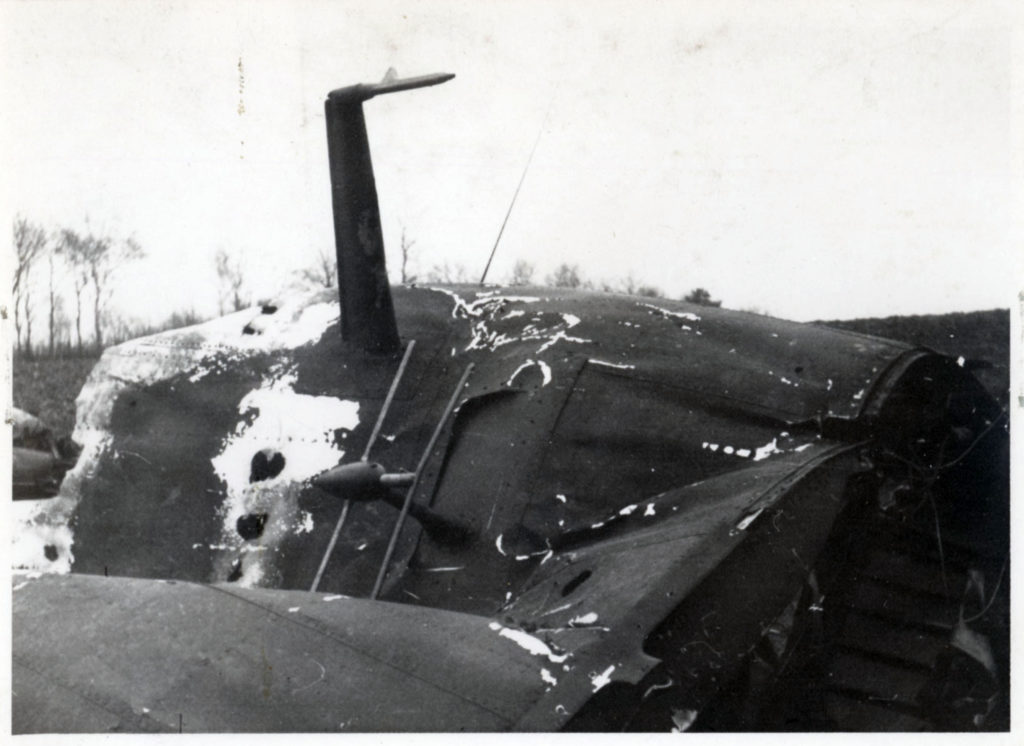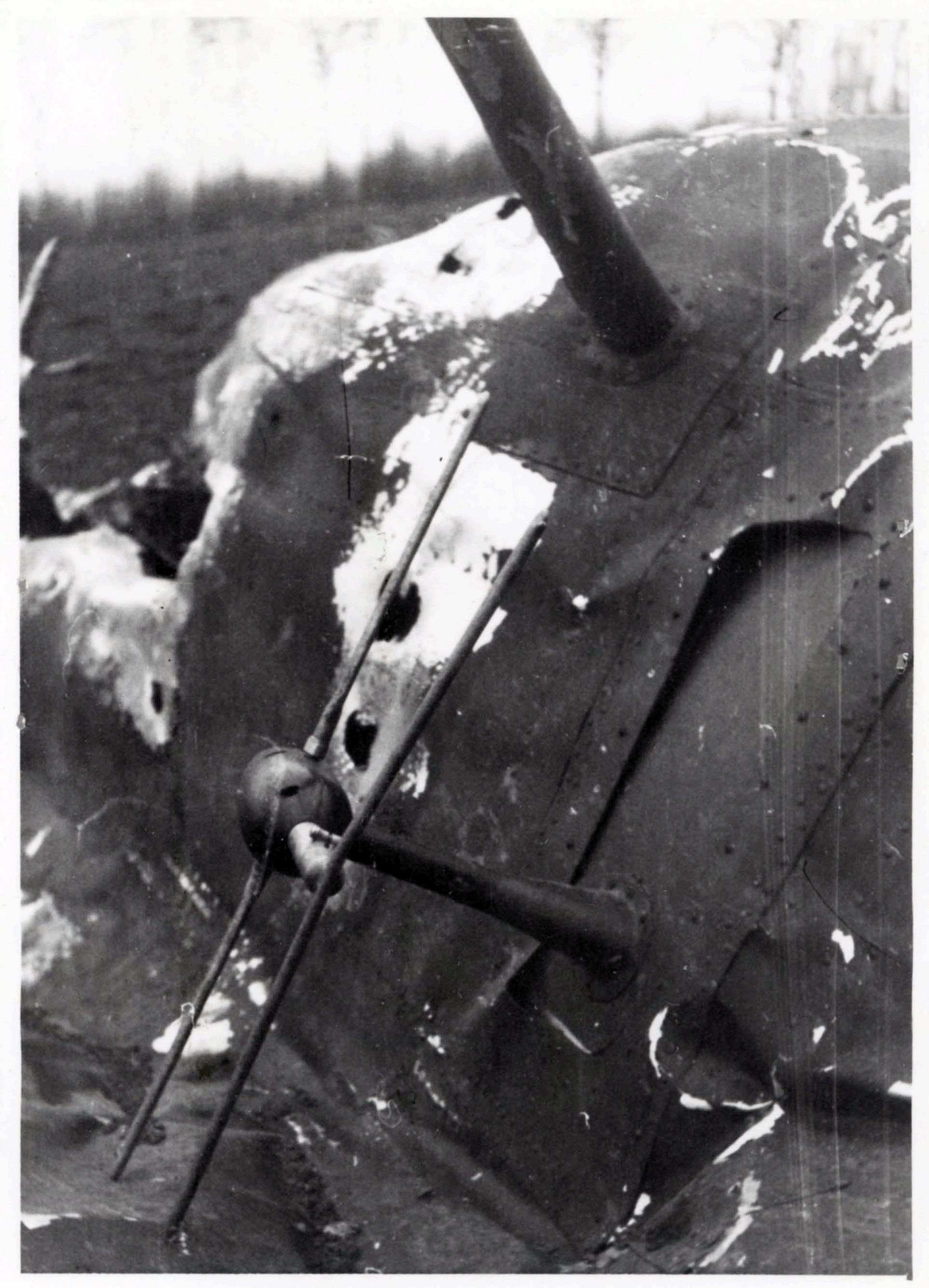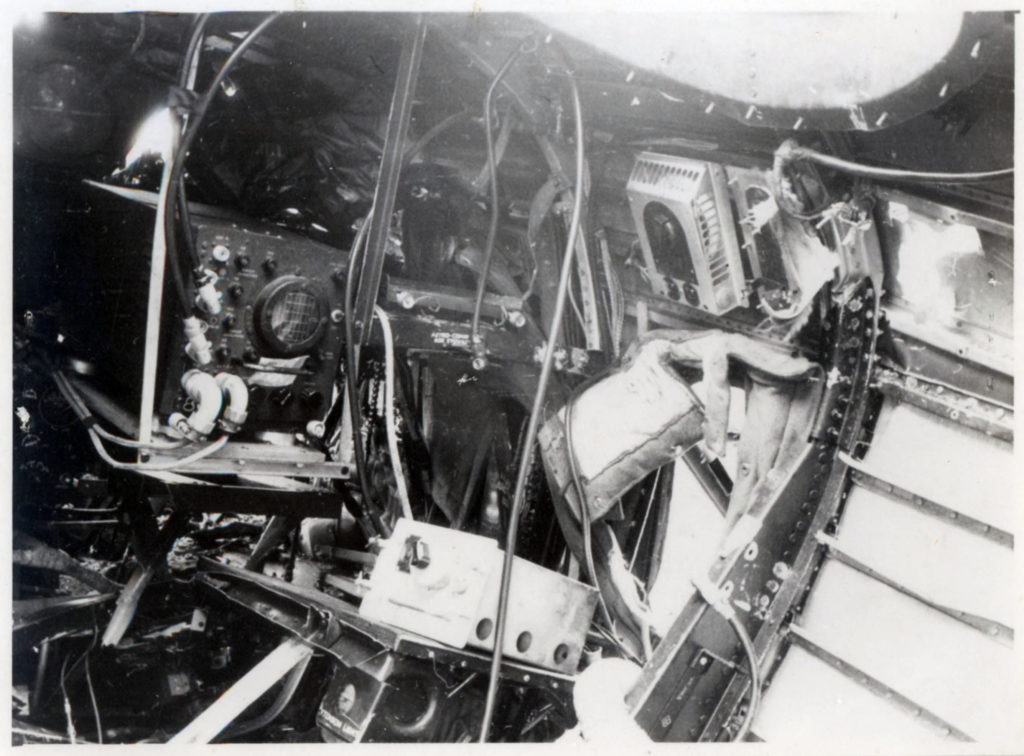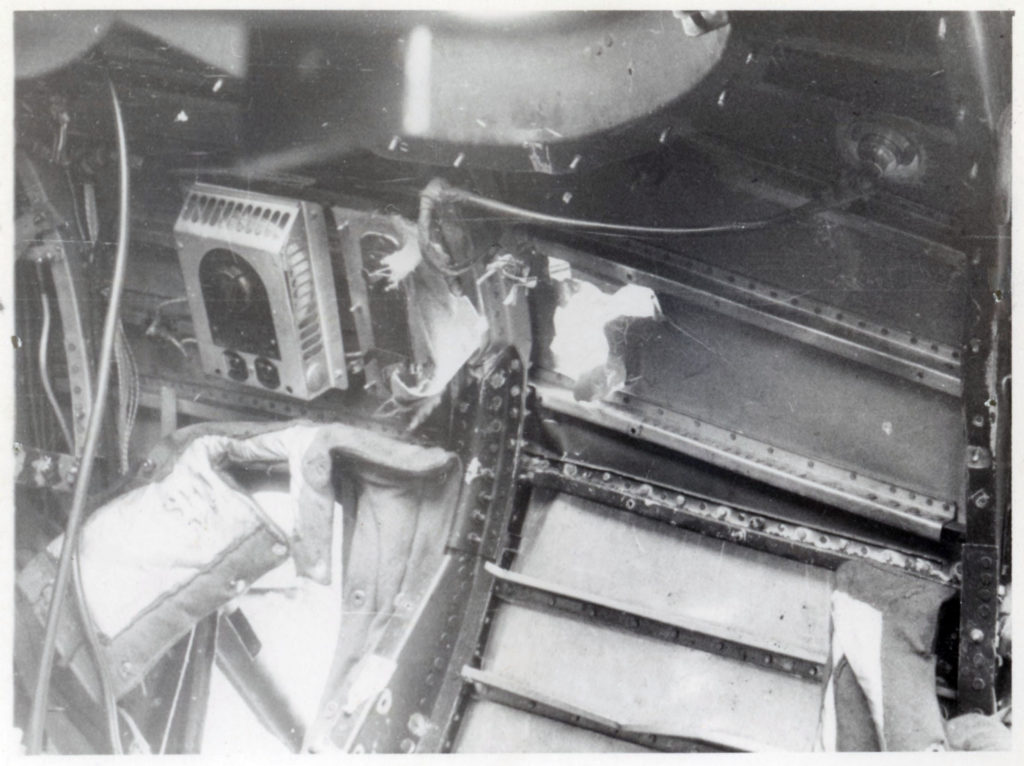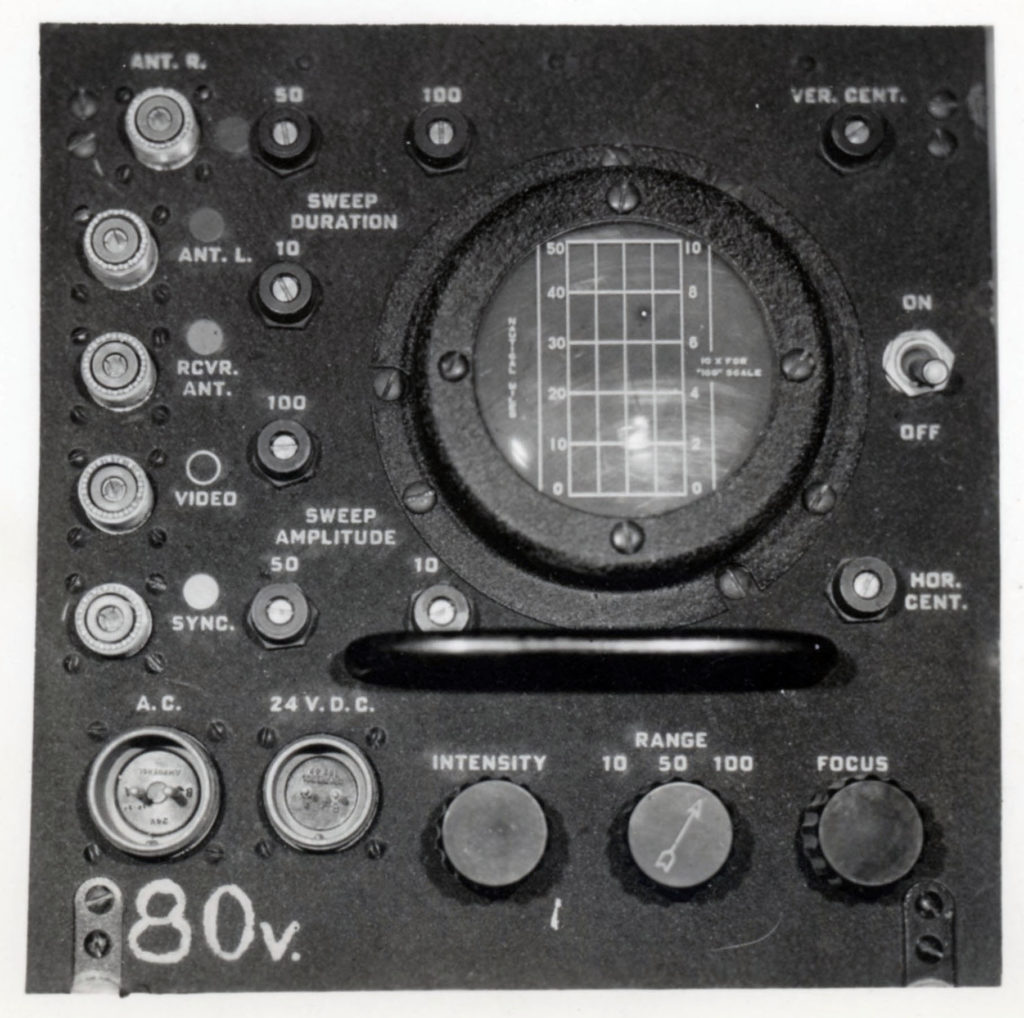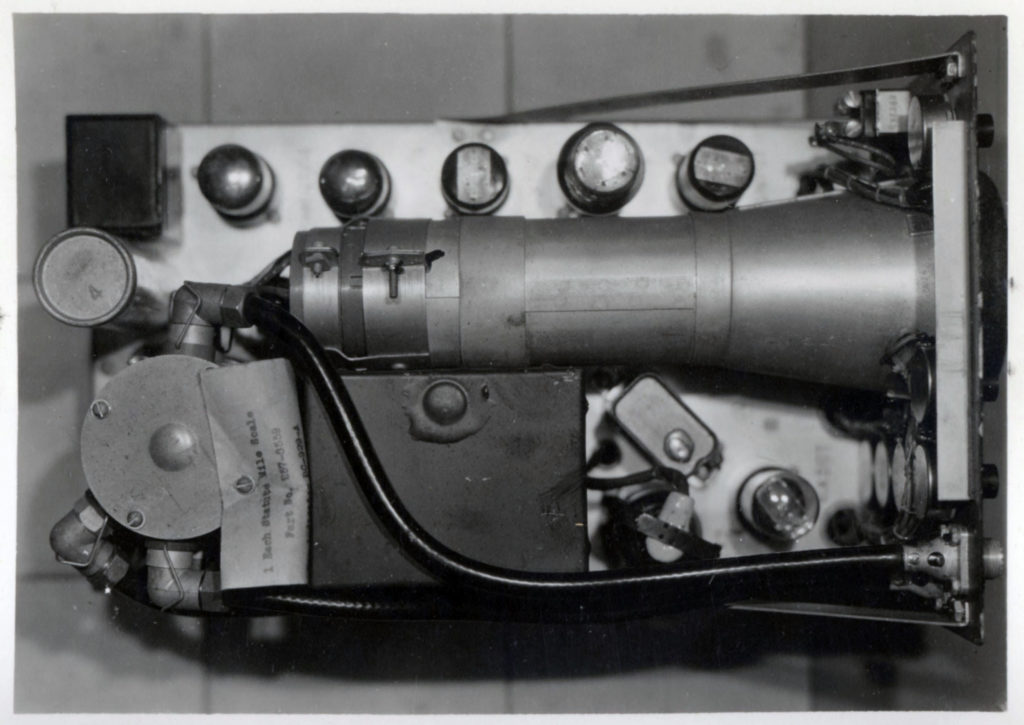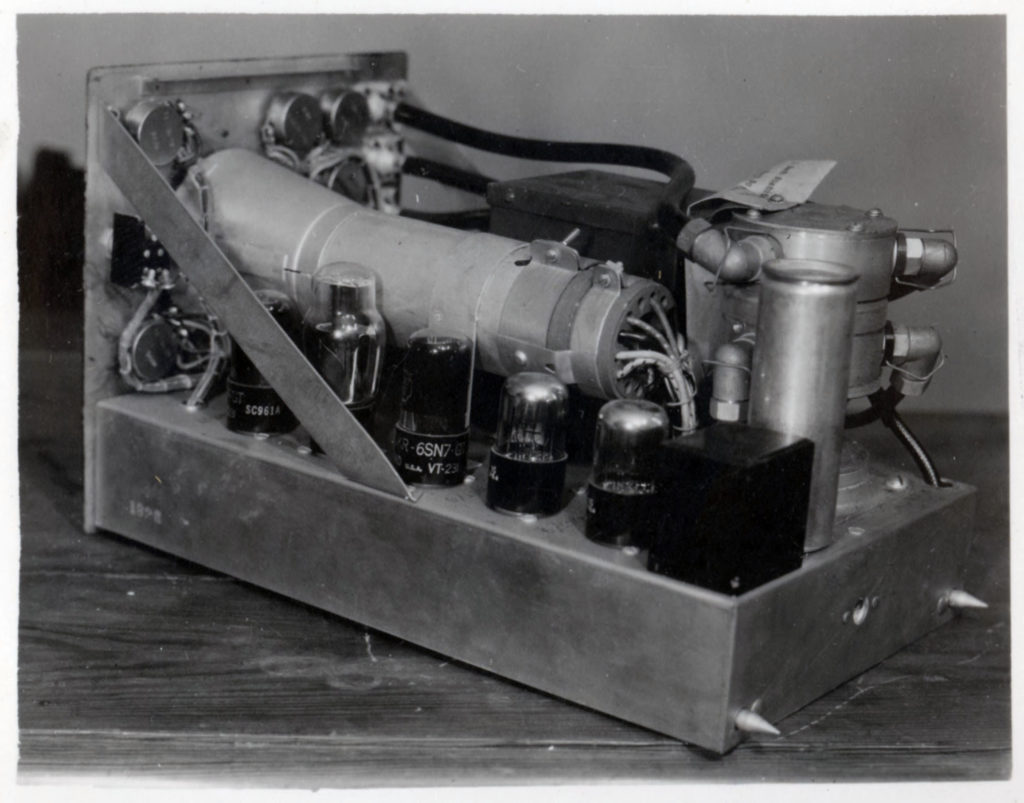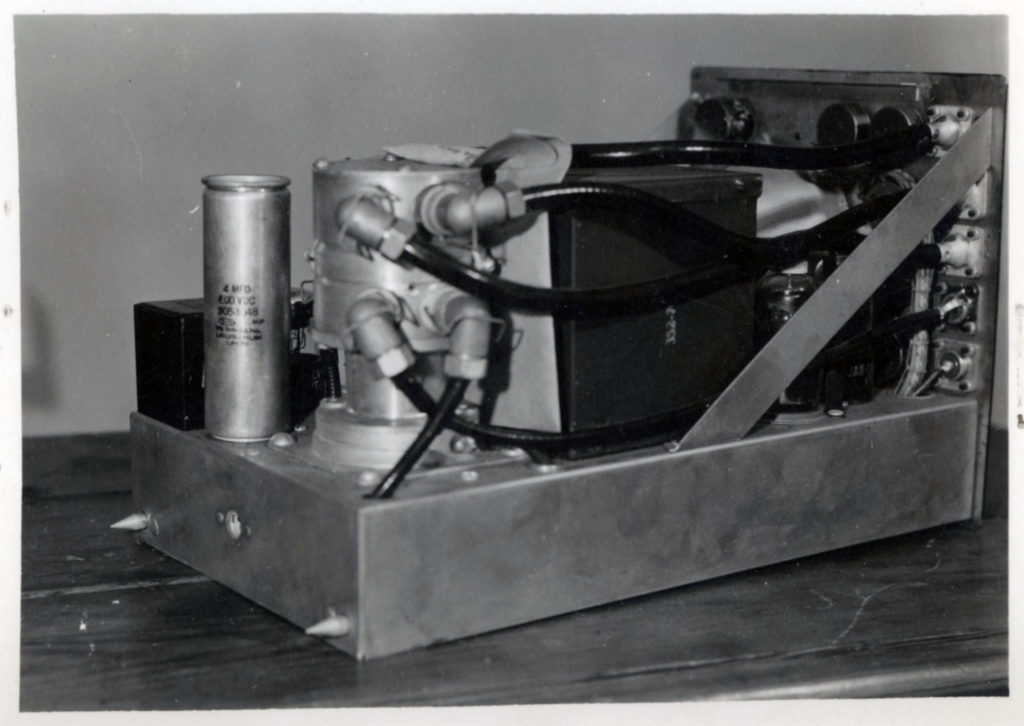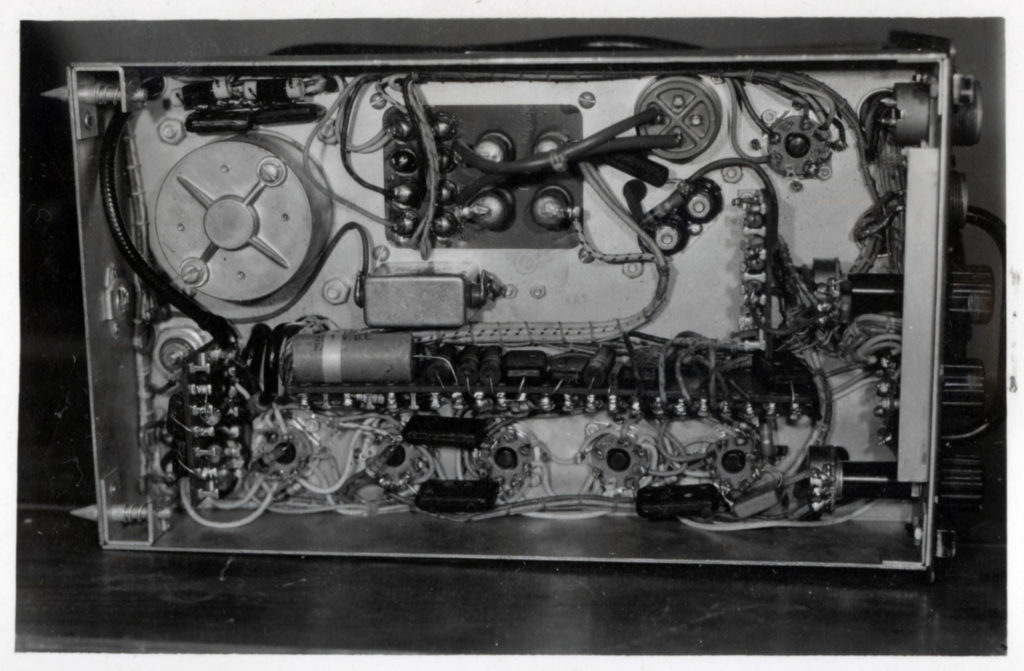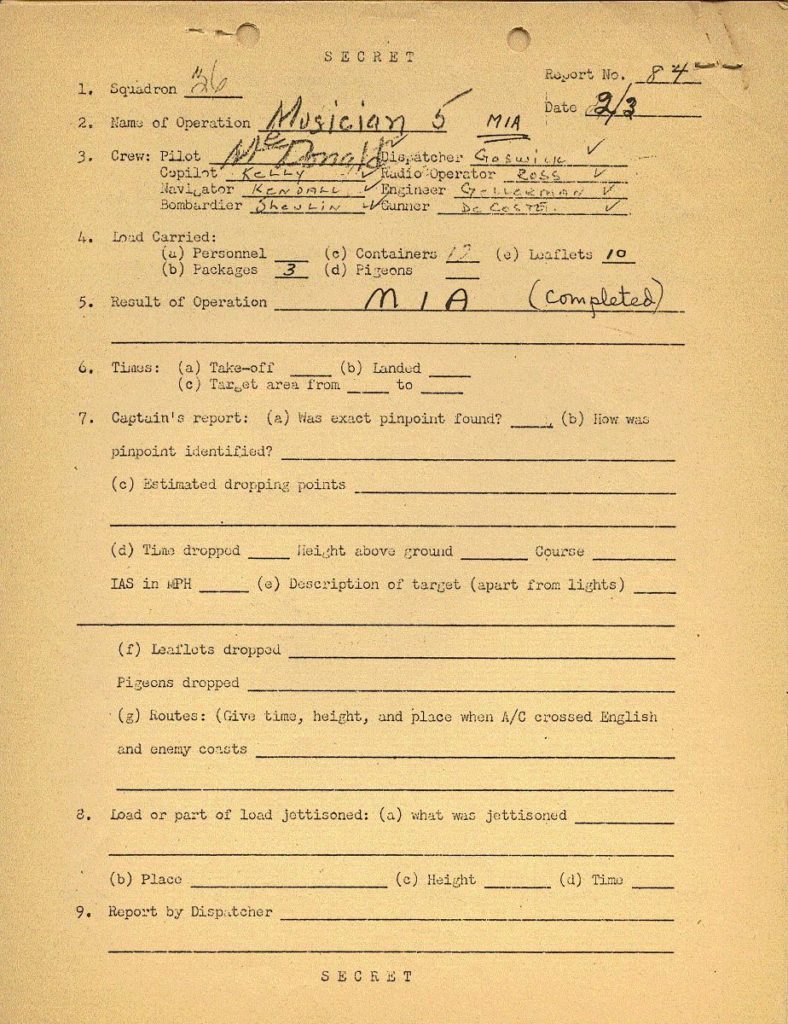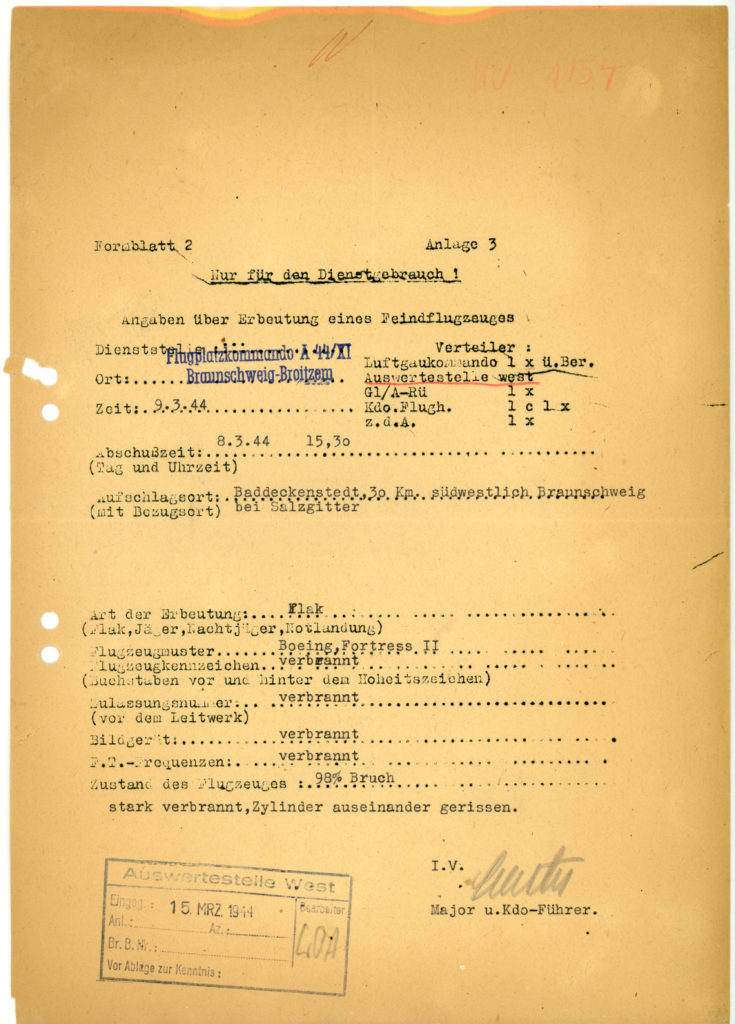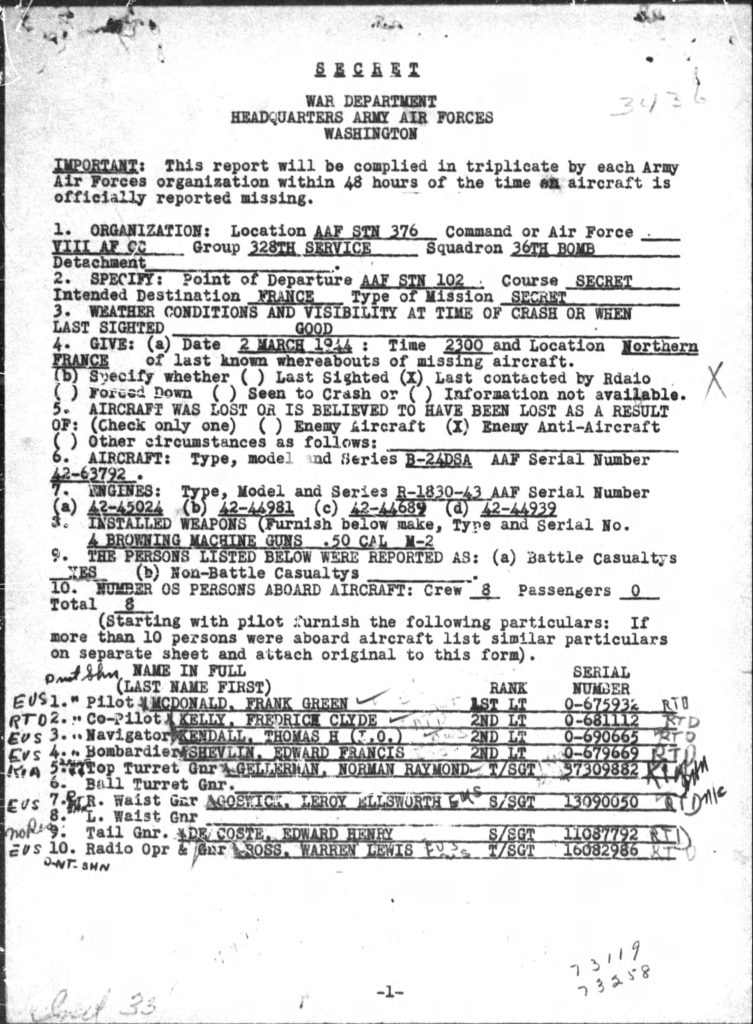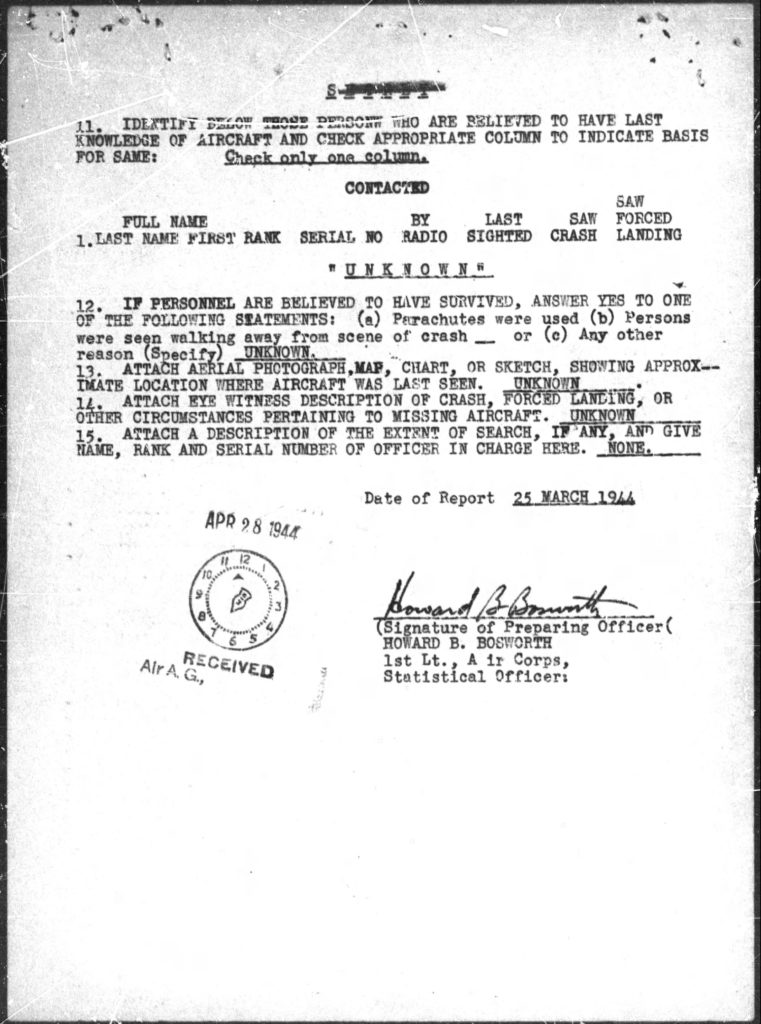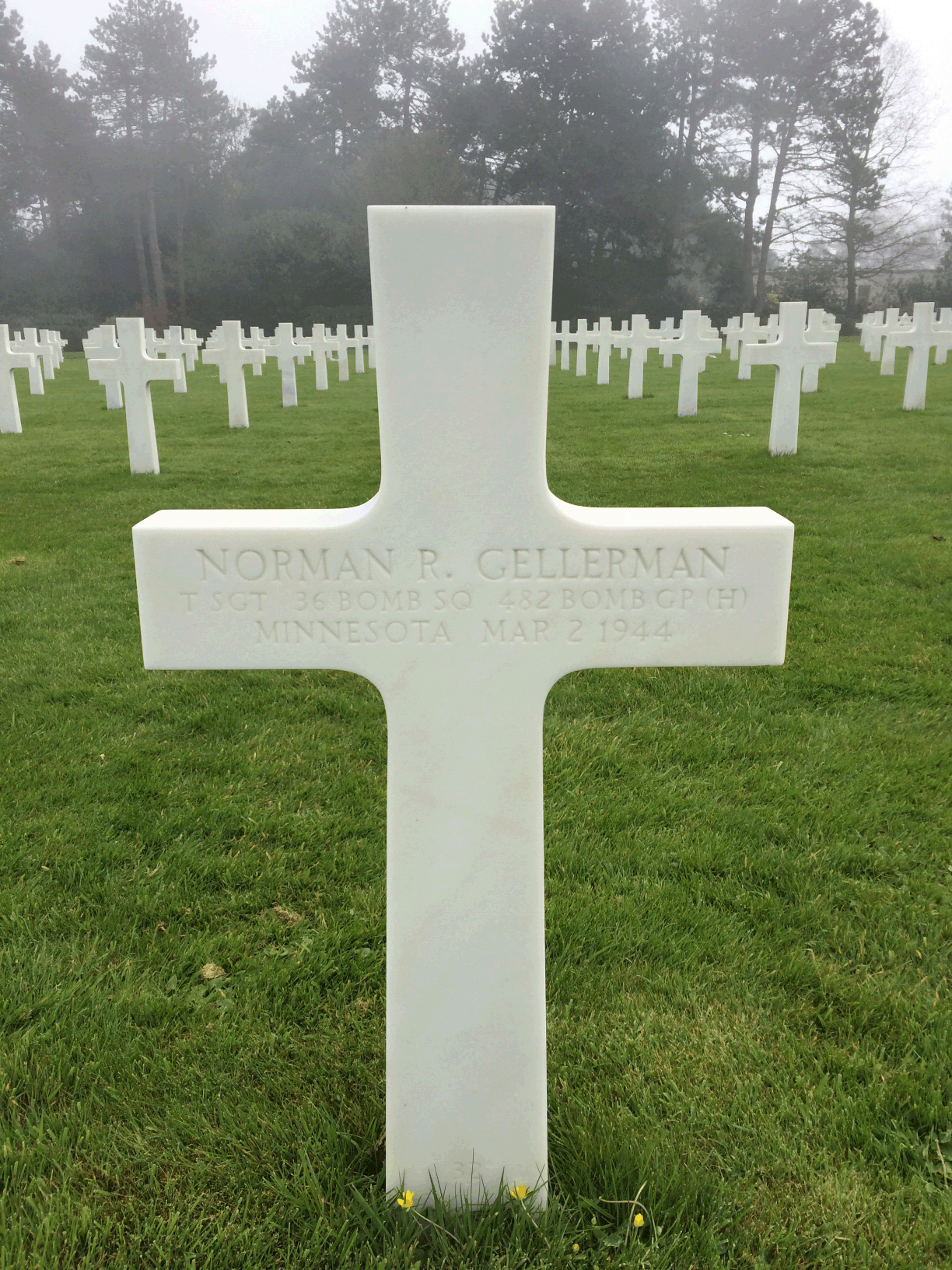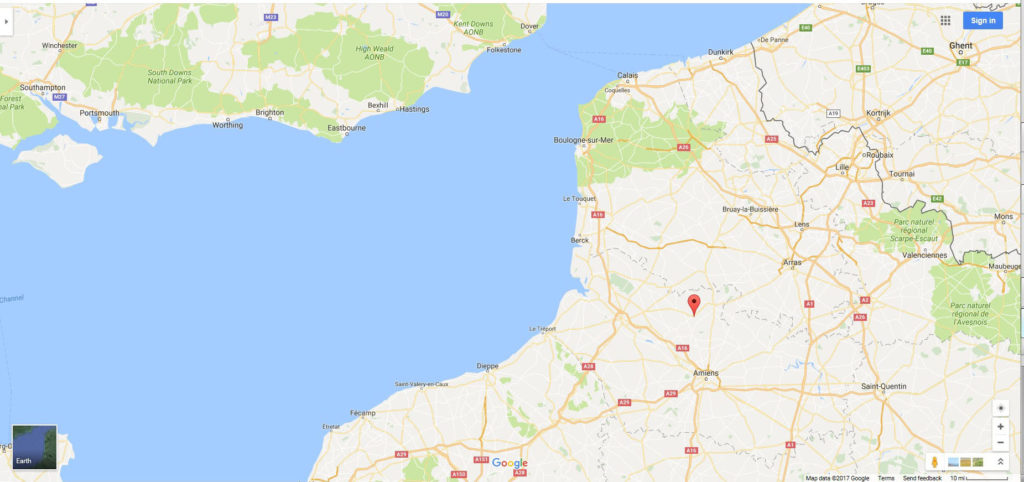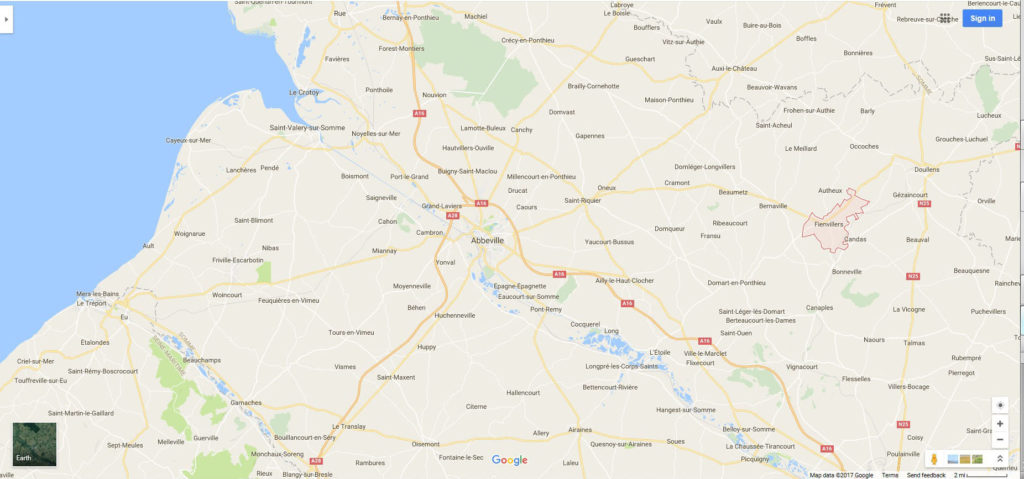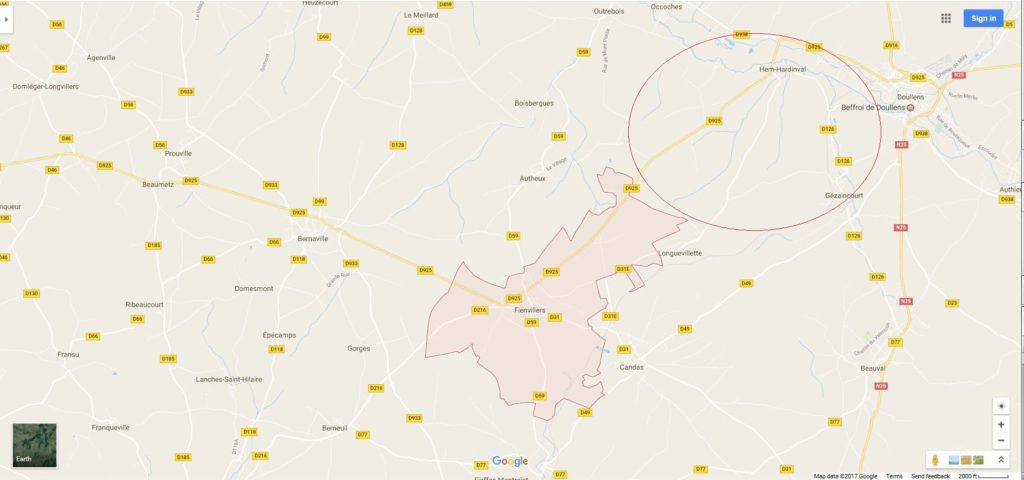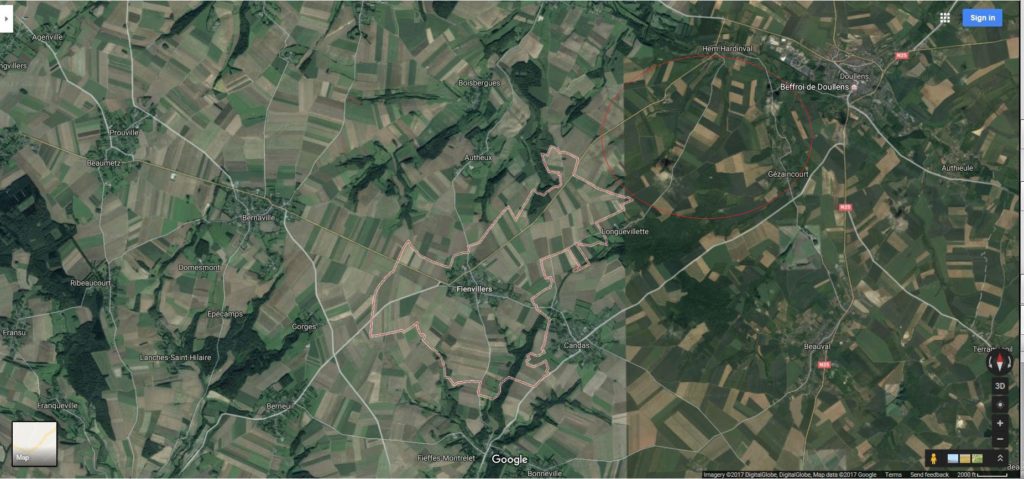This page presents the other pictures in Luftgaukommando Report 1054, in a format akin to the prior blog post.
____________________
DESCRIPTION OF AIRCRAFT 42-63792, AND PHOTO CAPTIONS
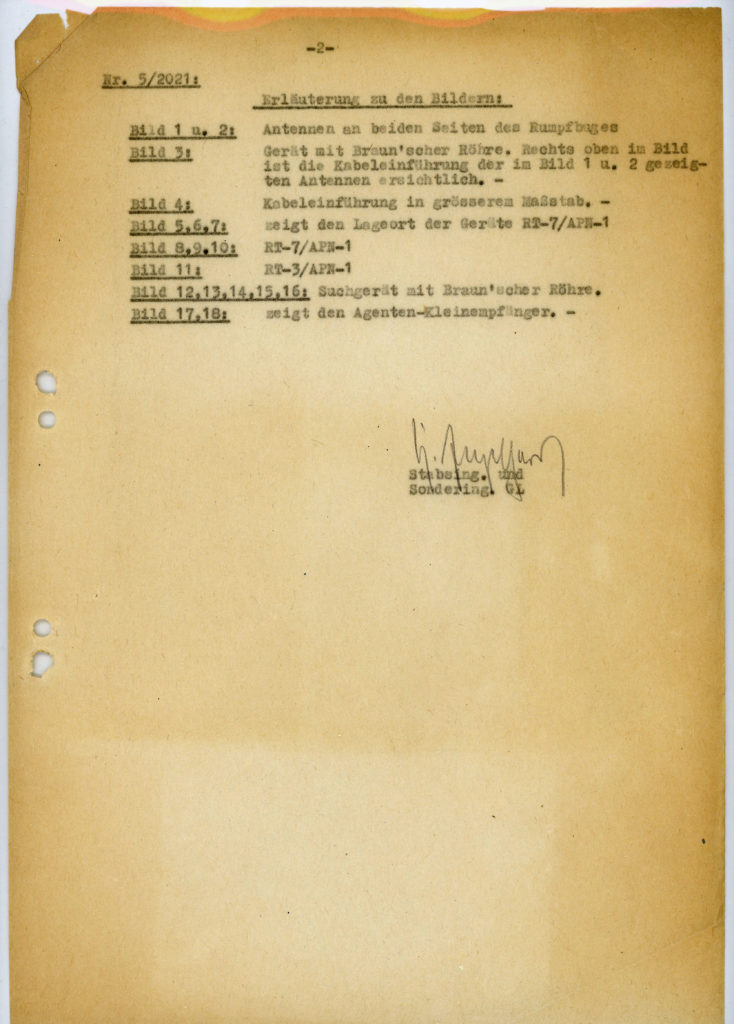 Feindgerät-Untersuchungsstelle 5
Feindgerät-Untersuchungsstelle 5
RLM GL C-Rü O.U. den 23.4.44
Feldpostnummer: L 50825 FW, Lgp. Brüssel.
Untersuchungsbericht Nr. 5/2021:
Am. 2.3.44 um 23.30 Uhr wurde in Fienvillers (8 km s.w. Doullens) eine Liberator durch Flak abgeschossen. Von der Besatzung wurden 2 Mann gefangen genommen.
Das Flugzeug war als Sabotagematerialträger eingesetzt und sehr stark zerstört.
Die Typenbezeichnung des Flugzeuges lautete: B 24 D, Ser. 42-63792. Bemerkenswert an diesem Flugzeug war die FT-Ausrüstung. Es befanden sich beiderseits des Rumpfbuges die im Bild 1 u. 2 dargestellten Antennen. Ferner befanden such nachfolgende FT-Geräte an Bord, die grösstenteils bereits durch Kurier nach dem RLM GL C-Rü gesandt wurden:
1. RT-3 / APN-1
27 Volt
D.C. N.X.S. – 2424
1341 C.R.V.
2. T-7 / APN-1
110 DB / 25
N.X. – 23763
1237 C.R.V.
3. Anzeigegerät mit Braun’scher Röhre, vermutlich Suchgerät (Bild 12, 13, 14, 15 u. 16). –
4. BC-433-C, Ser. Nr. 14506
5. BC-966-A, Ser. Nr. 45327
6. BC-454-A, Ser. Nr. 140
7. BC-455-B, Ser. Nr. 20162
8. BC-445-B, Ser. Nr. 52370
9. BC-929-A
Trotzdem bei diesem Flugzeug verschiedene neue Geräte dabiei waren, waren sämtliche FT-Geräte von der Funkmeisterei des Fl.H. Rosiéres weggenommen worden. Die FT-Geräte mussten erst dort abgeholt und zur Entnahme der Stecker und Kabel wieder in das Flugzeug eingesetzt werden. –
Ferner wurden mehrere Agenten-Empfänger des Musters Miniature Communications Receiver (M.C.R.1.) festgestellt.
Als Anlage zum Bericht werden 18 Fotos übersandt.
Erläutering zu den Bildern:
Bild 1 u. 2: Antennen an beiden Seiten des Rumpfbuges
Bild 3: Gerät mit Braun’scher Röhre. Rechte oben im Bild ist die Kabeleinführung der im Bild 1 u. 2 gezeigten Antennen ersichtlich.
Bild 4: Kabeleinführung in grösserem Masstab.
Bild 5, 6, 7: zeigt den Lageert der Geräte RT-7 / APN-1
Bild 8, 9, 10: RT-7 / APN-1
Bild 11: RT-3 / APN-1
Bild 12, 13, 14, 15, 16: Suchgerät mit Braun’scher Röhre.
Bild 17, 18: zeigt den Agenten-Kleinempfänger.
Engelhard
Stabsing. Und
Sondering. GL
____________________
Enemy equipment investigation center 5 KU 1154
Ministry of the Air Force GL C-Rue Local Quarters, 23 April 1944
Field postal No L 50825 FW
Air District Post Office Brussels
Investigation Report No 5 / 2021
On 2 March 1944 at 2330 a Liberator had been shot down by anti-aircraft over Fienvillers (8 km southwest of Doullens). Two members of the crew had been captured. The plane was equipped as sabotage material-carrier and therefore very seriously damaged.
The type markings of the plane were as follows: B 24 D, Serial No. 42-63792. This plane was equipped with remarkable radio equipment. There were aerials on both sides of the front of the fuselage as pictures 1 and 2 show. Further, there was the following radio equipment on board, the greatest part of which has been sent by messenger to the Ministry of the Air Dorces GL C-Rue.
1. RT-3 / APN-1
27 Volt
D.C. N.X.S. – 2424
1341 C.R.V.
2. RT-7 / APN-1
110 DB / 25
N.X. – 23763
1237 C.R.V.
3. Indicator-set with Bruan’scher tube, probably search-equipment (see picture 12, 13, 14, 15 and 16)
4. BC-433-C, Ser. No. 14506
5. BC-966-A, Ser. No. 45327
6. BC-454-A, Ser. No. 140
7. BC-455-B, Ser. No. 20162
8. BC-445-B, Ser. No. 52370
9. BC-929-A
Though this plane was equipped with different kinds of new radio equipment, all radio equipment had been taken out by the radio office of the Air-base Rosieres. The radio equipment had to be obtained from that office, and for the purpose of the removal of the plugs and cables had to be installed again into the plane. Also, several agent receivers of the type “Miniature Communications Receiver (M.C.R. 1)” were found.
Enclosed in this report 18 photographs.
Photo explanation.
Picture 1 and 2: Antenna on both sides of the front of the fuselage.
3: Equipment with Bruan’scher tube. In the right upper corner of the picture the cable installation of the antenna (shown in picture 1 and 2) can be seen.
4: Cable installation on larger scale.
5, 6, 7: shows the location of the equipment RT-7 / APN-1
8, 9, 10: RT-7 / APN-1
11: RT-3 / APN-1
12, 13, 14, 15, and 16 Search equipment with Braun’scher tube.
17 and 18: Shows the Miniature-Communications-Receiver.
Enclosures:
Instructions for the
“Miniature Communications Receiver”
and 18 photographs.
Signed: Engelhard
Staff-Engineer and Special Engineer
____________________
PHOTOS: APN-1 Radar Altimeter and M.C.R.-1 Miniature Communications Receiver
____________________
Pictures 8, 9, 10: RT-7 / APN-1
Pictures 8, 9, 10: RT-7 / APN-1
Pictures 8, 9, 10: RT-7 / APN-1
Picture 11: RT-3 / APN-1
Comments: Here are several views of the APN-1 radar altimeter. The case has been damaged and the front cable sockets removed, but the interior of the unit – chassis and attached components – is completely intact.
A video description of the APN-1, created by the infoagemuseum (Wall, New Jersey – in Monmouth County) and narrated by Mr. Ray Chase, describes the operation of the unit. A beautiful set of illustrations of a (quite intact!) APN-1 is available at the website of Aces, Contrails and Unsung Heroes, while the schematic diagram of the APN-1 can be found at this link to the Waverley Amateur Radio Society.
____________________
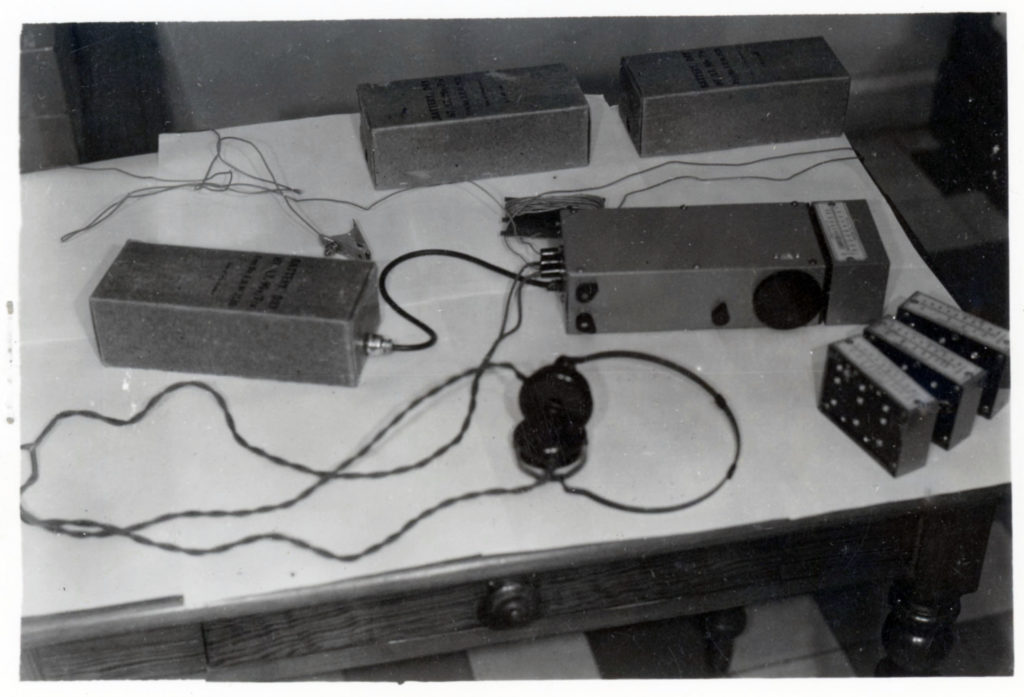 Bild 17, 18: zeigt den Agenten-Kleinempfänger.
Bild 17, 18: zeigt den Agenten-Kleinempfänger.
Pictures 17 and 18: Shows the Miniature-Communications-Receiver.
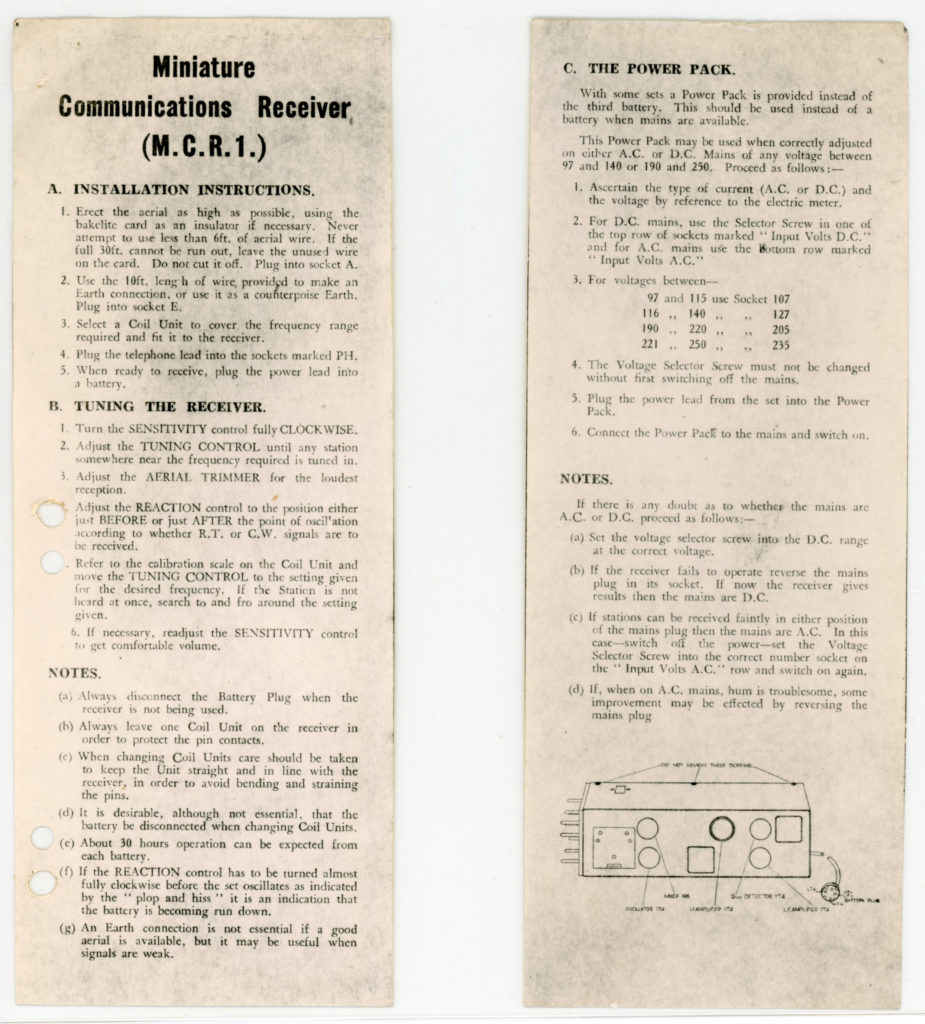 Bild 17, 18: zeigt den Agenten-Kleinempfänger.
Bild 17, 18: zeigt den Agenten-Kleinempfänger.
Pictures 17 and 18: Shows the Miniature-Communications-Receiver.
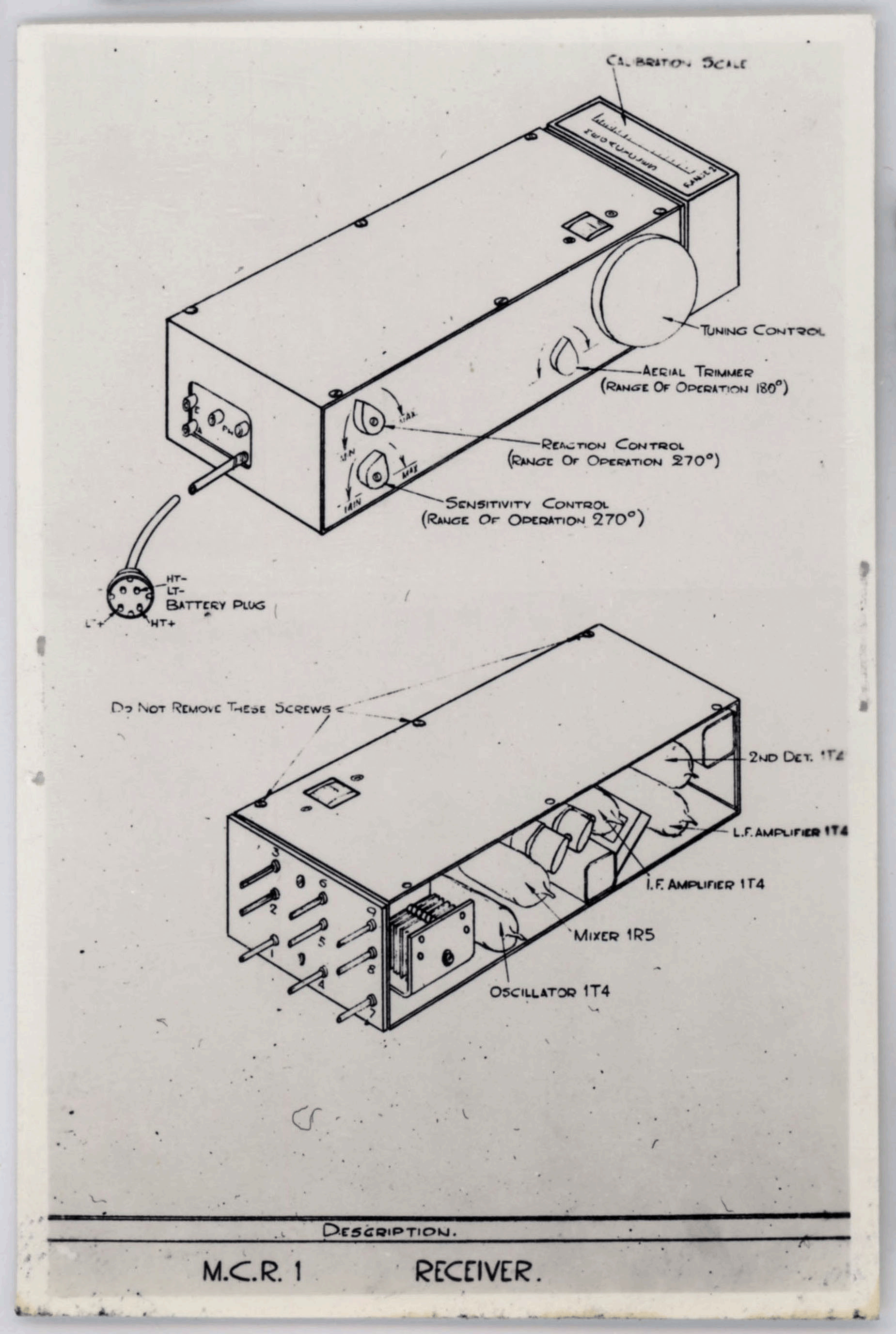 Bild 17, 18: zeigt den Agenten-Kleinempfänger.
Bild 17, 18: zeigt den Agenten-Kleinempfänger.
Pictures 17 and 18: Shows the Miniature-Communications-Receiver.
Comments for Photos 17 and 18: One aspect of the crew’s intended mission is evidenced by the subject of these images: A Miniature Communications Receiver – 1 (“M.C.R.-1”). The M.C.R.-1, a portable, tube-based miniature receiver unit, was designed for use by S.O.E. (Special Operations Executive) Agents, Special Forces, and Resistance Groups.
An M.C.R.-1 unit with its associated components is seen lying on a table. Three power packs (one of which is connected to the unit by a short cable) are present, while on the right are three “Frequency Plug-In” coil packs, each of a different frequency range (2.5 MHz – 4.5 MHz, 4.5 MHz – 8 MHz, and 8 MHz – 15 MHz), which extend the receiver’s length.
A thorough description of the M.C.R.-1 (with very nice color photographs) is available at the CryptoMuseum website. The operating manual for the receiver – in which it’s dubbed a “Midget Communications Receiver” – can be found here, while the schematic diagram of the unit (via the Waverley Amateur Radio Society) can be found here.
The Luftgaukommando Report includes a small and fascinating bonus: It contains a very actual – quite original – very genuine – surviving remnant of the McDonald crew’s last mission: a placard of operating instructions for an M.C.R.-1.
A superb set of images of an M.C.R.-1 and its associated components (including interior views of both the receiver and its power supply) as well as instructions covering its installation and use, is available at Jan Poortman’s PA3ESY Vintage Radio Collection website.
____________________
References
Harrington Museum – Carpetbagger Planes (compiled by Roy Tebbutt)
Harrington Museum (Aircraft of the 801st / 492nd Bomb Groups, and 406th NLS, compiled by Roy Tebbutt)
Harrington Museum (List of Allied Aircraft lost on Special Duty Operations, compiled by Roy Tebbutt)
Frank G. McDonald Crew
USAAF Special Operations – 801 BG – 492 BG Carpetbaggers (McDonald Crew History)
USAAF Special Operations – 801 BG – 492 BG Carpetbaggers (McDonald Crew Orders)
USAAF Special Operations – 801 BG – 492 BG Carpetbaggers (McDonald Mission Reports – zip file)
Escape & Evasion Report 669 (Lt. Frederick C. Kelly)
NARA Escape & Evasion Report search portal
NARA Escape & Evasion Report search portal (Escape & Evasion Report 669, for Frederick C. Kelly)
WW II Escape and Evasion Information Exchange (Directory of MIS-X Report Numbers for members of US Army Air Forces, and, US Army Ground Forces) – An extraordinarily comprehensive website!
BC-929A “Rebecca” Radar Interrogator
Smithsonian National Air and Space Museum (general description)
AeroAntique.com (general description of BC-929A “Rebecca” Radar Interrogator)
QSL.net (“Connecting Hams Around the World”) (brief description)
Wikipedia Entry for Rebecca Radar Interrogator
Walt Gromov’s Radio Museum – Communications in WW I and WW II:
“Graphic Survey of Radio and Radar Equipment Used by the Army Air Forces – Radio Navigation Equipment – 1 July 1945” (BC-929 and APN-1 illustrated in document)
Braun’scher Tube
APN-1 Radar Altimeter
Waverley Amateur Radio Society
Waverley Amateur Radio Society (APN-1 schematic diagram (this ain’t no Heathkit!))
HyperWar (Use of the APN-1)
Inforagemuseum (Video about APN-1)
VMARS (Vintage and Military Amateur Radio Society) Manuals (APN-1 Manual
“Handbook Maintenance Instructions for Radio Set AN / APN-2 – AN APN-2Y – AN / APN-2B (1945 09 25) (Technical Order 12P-5 – 2APN-2“)
Miniature Communications Receiver M.C.R.-1
Crypto Museum (Description of M.C.R.-1)
Crypto Museum (Detailed instruction manual for M.C.R.-1)
Imperial War Museum (Photographs of M.C.R.-1)
Waverley Amateur Radio Society (M.C.R.-1 schematic diagram)
Jan Poortman’s Vintage Radio Website (Illustrations of M.C.R.-1)
A Book…
Freeman, Roger, The Mighty Eighth – A History of the U.S. 8th Army Air Force, Doubleday and Company, Inc., Garden City, N.Y., 1970 (Special Operations Group – Carpetbagger history summarized on p. 263)
